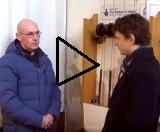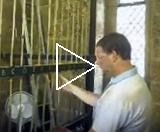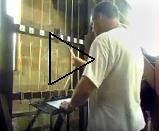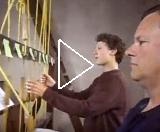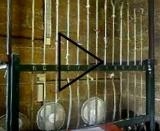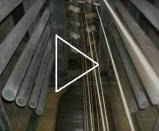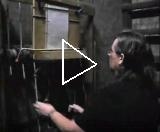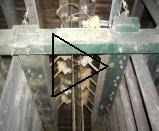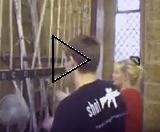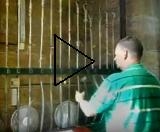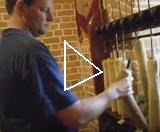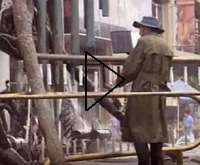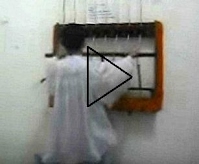|
The Ellacombe
Chimes the website of the Support Group for enthusiasts of
all forms of tower bell chiming around the world what – why –
where – when – how ? Contents (with links) for recent changes
find/search for * |
|||||||||||||||||
|
Comparisons with Full Circle
Ringing Alternative methods of chiming |
|||||||||||||||||
|
The history The
Ellacombe Chiming frame is a device that enables one person to ring all the
bells. It was invented in approximately 1821 by the Revd. Henry Thomas
Ellacombe and installed in 1822 by his “clever workman” in the Parish of
Bitton, located between Bristol and Bath. It is said that Revd. Ellacombe
(his portrait is shown here) devised the mechanism so that all the bells
could be rung by one trusted person without involving a band of unruly and
perhaps drunken ringers. |
|
||||||||||||||||
|
Two articles from the 1880s are available
here that describe his life's achievements... from the Church Bells magazine
at the time he retired as one of the editors from the Transactions of the Bristol and Gloucestershire Archaeological
Society after his death |
|||||||||||||||||
|
|
* On the 26th June 2021,
a worldwide celebration took place for the 200th anniversary of the Revd Henry Thomas Ellacombe’s invention of the
device. For more information about the event see... www.bittonhistory.org.uk/ellacombe-chimes-bicentennial and www.bittonhistory.org.uk/.../Chimes-Leaflet-FINAL1.pdf Links to over 100 video recordings on that occasion are at... |
|
|||||||||||||||
|
Here
are the Revd. Ellacombe’s own words and a drawing taken from the
4th edition of his book Practical remarks on belfries and ringers published in 1878... |
|||||||||||||||||
|
The Revd. Ellacombe’s complete book is available
online in Archive.org at... Practical
Remarks on Belfries and Ringers |
|||||||||||||||||
|
In The
History of Bitton published in 1881 the Revd. Ellacombe wrote: “In the basement of St Mary’s tower
Bitton is a manual within a case for chiming the bells for services by means
of a hammer striking the inside of the bell. This was set up in 1822. The
method was suggested to me by Sam Watts, a clever workman, and is supposed to
be the first thing of that sort. Since that time the contrivance has been set
up in about 200 towers.” (courtesy of www.stmarysbitton.org.uk ) |
|||||||||||||||||
|
|
Here is a
lithographic drawing from the Rev. H.T. Ellacombe's book "Bells of
the Church" that has the
caption: "at
St. Martins in Fields the steeple keeper, has by himself for many years
chimed the bells in the way here represented". The drawing gives a good impression of how the Revd. Ellacombe
saw some churches coping without a co-operative ringing band before his
invention was available. |
||||||||||||||||
|
The impact of the Revd. Ellacombe’s
invention and recognition that it could be used to play tunes, must have been
significantly enhanced by the publication in 1889 of William Haley’s 150 page
book entitled: “The Bell Hymn Book”. It is in effect a beginner’s guide to
playing hymns on the Ellacombe Chimes. Haley wrote these words in the
introduction to the book: “The following pages have been
compiled, believing that the labour bestowed thereon will tend to supply a
long-felt want, and to make the Chimes of the Village or Parish sound their
notes in such succession as shall lead, perhaps, to higher thoughts and
desires than simple permutation, and changing positions”. The
book then has 9 pages of ‘instructions’ for beginners (albeit in a somewhat
dated writing style),followed by the music for 143 hymns using his system of
notation, with 2 tunes for 5 bells, 6 for 6 bells, 24 for 8-bells, 20 for
10-bells, 44 for 12-bells. There are other references to the book further
down this page. William
Haley was the son of Henry Haley, who was well recognised in the ringing
world at the time. By the age of 23 he had composed and called his first peal
- Stedman Caters. He also rang and called many peals on hand-bells and
organised the first ever peal of Stedman Triples on handbells in 1853. He was
one of a party of ringers who travelled to the USA in 1850 and called the
first ever peal there of Grandsire Triples in Christ Church, Philadelphia. William
Haley his son was employed as a bell tuner with John Warner & Sons Ltd.,
who were bell founders at Cripplegate, London and so he would also been very
knowledgeable on all aspects of bell ringing. His company also made handbells
Carillons and Ellacombe Chimes equipment. At
the dedication of new bells at St Lukes in Deptford in 1877 William Haley
played tunes on the bells using a temporary Ellacombe chimes rack set up
within the church. Both father and son took part the dedication ring of the
new St Paul's Cathedral ring of twelve in 1878. William
Haley’s expertise, his involvement with chiming and the publication of the
book could well have gone some way to overcome the schism that existed for
more than a century between those clerics who suffered from undisciplined
ringers and hence advocated chiming in their churches, and those ringers who
were disciplined, sober and dedicated to the art of change ringing and
methods. Today there are Haley descendants around the
world, and some are musicians. |
|||||||||||||||||
|
Here are the first eleven pages of... that includes the score for the Ellacombe hymn
tune |
|||||||||||||||||
|
Although many church towers have had Ellacombe Chimes in the past,
countless have either been completely removed (leaving just the holes in the
ceiling), or have not been maintained so can no longer be played. There were several
factors that contributed to this... o When towers were upgraded
(eg 6 to 8 bells) or the frames were replaced the chimes were not also
upgraded. o All
bells must in down position for chiming, and in the past heavier bells were
frequently left in the up position. o In periods when a keen
band of ringers were available the chimes mechanism was not adequately
maintained. o Chiming is a one person
activity and most ringers prefer the team activity of full circle ringing. |
|||||||||||||||||
|
Identifying
towers that chime No definitive list of towers in the
UK fitted with Ellacombe Chimes and others that chime has been found. Dove’s
Guide does not identify “Ellacombes” or “chimes”. According
to that guide there are about 7000 bell towers in the British Isles with 3 or
more bells and 1165 towers with 6 or more “ringable” bells. However
identifying those that have Ellacombe Chimes is difficult. An interesting example is the county
of Kent. Love's Guide for Kent lists 220 towers
with 6 or more ringable bells . A search of the guide reveals that there
are... 27 towers with Ellacombe
chimes 22 of
those have less than six bells so can not play music 4 have
six bells (out of a total of 121 six bell towers) 1 has
eight bells (out of a total of 103 eight bell towers) Hence there are surprisingly few
towers with Ellacombe Chimes in Kent. Knowing there are 83 counties in the UK
an extrapolation of the Kent data could mean there are no more than a few
hundred remaining thoughout the UK. warksbells.co.uk lists
728 UK bell towers, of which 110 are identified with Ellacombe Chimes, with
63 having lost them. 44 towers have electric or other automated means of
chiming. keltektrust.org.uk identifies
120 towers where they have provided bells for chiming and has Mike Chester’s
Spreadsheet 700+ list of towers with chimes, of which 126 refer to
“Ellacombe”. |
|||||||||||||||||
|
Although this study set out to research
traditional English bell towers with a full circle ringing capability and
have Ellacombe chimes fitted, it has long since been realised that this site
would not be complete without including towers with tubular and hemispherical
bells. Most, if not all of these are fitted with Ellacombe chimes frames, the
techniques used for ringing in these towers is the same, as these videos
from St James' Church, Riddings and Maentwrog in
Wales demonstrate... Tubular
bells and hemispherical... Most importantly the bells and
Ellacombe frames in these towers have generally been in continuous use for
well over 100 years and have accumulated far more experience, techniques and
music than towers with a full circle ringing capability in situations where
the Ellacombe chimes have had just an auxiliary role. We are now in no doubt that
there are many benefits in sharing the collective knowledge, expertise and
resources between all forms of chiming. www.stpetersformby.org lists 242 tubular bell towers
in the UK, many using an Ellacombe Chimes frame. keltektrust.org.uk
is a charity that finds new homes for surplus and redundant bells and has spreadsheets
indentifying tubular bell towers with 144 extant listed, and hemispherical
bell towers with 56 extant listed. There are also a considerable number
of tubular bell towers with Ellacombe chimes frames in Commonwealth countries
such as Australia, New Zealand and Canada, and there are a large
number of tubular bell towers in the USA listed in... www.towerbells.org. In many installations in the USA, the
Ellacombe frame is known as a 'taut-rope chiming rack' or just 'taut-rope
rack'. |
|||||||||||||||||
|
Harrington's Tubular Bells Most tubular bells were constructed
by Harrington’s of Coventry between 1890s and the 1920s using their patented design.
John Harrington had developed and patented the design as early as 1884. The
quality and tone of the chimes earned him a gold medal at the 1885 Paris
World Fair. A USA patent was granted in 1888. part of Harrington’s tubular chimes sales brochure in the 1890s Harrington's claimed that: The tone was mellow and
pure and their bells were only a fraction of the price of "ordinary
bells" With no swinging, there
was less strain on the building and could be in any bell tower without
alteration They were not liable to
crack, or get out of tune and could be rung by one person using cords It is known that Harrington’s
installed several hundred of their tubular bells in churches and other
buildings around the world in countries as far away as Australia, Canada, New
Zealand, South Africa and the USA. Many are still in working order and use
Ellacombe frames. In 1894 Walter Durfee of Rhode Island
in the USA ceased importing Harrington's tubular tower bells and began
manufacturing them under his own name, continuing to use Ellacombe
frames. Later Durfee became the president of the United States
Tubular Bell Company which also used Ellacombes for their bells. Some of
these still exist in North America but the Ellacombe frame is sometimes
know as the 'taut-rope chiming rack' or just 'taut-rope rack'. |
|||||||||||||||||
|
Other means of Chiming Some towers are fitted with Clavier
style keyboards as an alternative to Ellacombe chimes. These devices, also
called consoles, are normally associated with Carillons with a much large
number of bells. The British Carillon Society defines a Carillon as having 23 or
more bells. Mike Chester’s spreadsheet in keltektrust.org.uk identifies
Carillons 31 in the UK. However Claviers are also used in many towers with
less than 10 bells performing similar roles to Ellacombe frames. Mike Chester’s same spreadsheet
identifies 94 with Claviers that are not Carillons, mostly
with between 5 and 8 bells. The claviers at Stannington and
at St Mary's, Harrogate are shown here, together with a video of
the 8 bell Clavier at St Mary’s, Stannington Church, Northumberland
being played... There is one further group of towers
that chime which is exemplified at Dedham Parish Church in Essex. Traditional
full circle ringing was suspended there in the 1860s when cracks were
identified in the Tudor tower. Since then the full circle ropes have been
used to chime the eight bells. Until a few years ago the ropes were tied directly
to bell clappers, sometimes strangely referred to as "Clocking"
(see Risks). However this arrangement was
replaced in 2012 and the ropes are now connected to trigger hammers, and
a team of ringers continue to use the full circle ropes to chime rounds,
call changes and some well know sequences. A 10 minute YouTube video shows
visitors to the church being invited and succeeding to ring Rounds
and Queens. Relevant short clips are at... ytcropper.com(1) and ytcropper.com (2) The ropes move by only 12 inches or
so and the trigger hammers mean that that the hammer cannot be held on the
bell. The hammers are well balanced, very light to pull, have just
the right amount of bounce and damping at both ends of the rope movement,
making the bells very easy to ring. However, visiting ringers experienced
in methods find it difficult to adapt to this unusual configuration in the
short time available during a visit because... - The inertia normally created by a
heavy bell's rotation is not present resulting in completely different timing - There is no equivalent of a hand
stoke and back stroke - Conventional "rope sight"
used by methods ringers does not apply This Dedham style of chiming is known
to be used in some other towers in the UK that have structural problems,
including at Thorpe St. Andrew near Norwich, and the technique has also been
temporarily adopted elsewhere, for example it has been used to play carols at
Christmas at some locations because of its similarity to hand bellringing. There is more about the
techniques here In 2011 orchestral
conductor, Charles Hazlewood worked with the BBC to made a
television programme entitled: "Come Bell Ringing". As
part of the programme he set about seeing if church bells in Cambridge could
be used to make music and he organised a temporary conversion of the
bells in St. Edwards church so that the they could be chimed and play a
tune. The technique they used was very similar to the second method
in... Alternative ways to Chime. The
one hour programme is available on YouTube at... a
short clip of the relevant section involving chiming is
at... 36-mins
in A list of towers with chiming
mechanisms around the world is being continuously developed and
can be seen at... the list currently has a total of 481 entries with 427 in the UK, 14 in the
USA, 12 in Canada, 11 in Australia, 6 in Asia, 4 in Ireland and 6 in New
Zealand. * However, we believe there are at
least 550 Ellacombe devices and 120 baton claviers around the world, |
|||||||||||||||||
|
Comparisons with
Full Circle Ringing · Chiming
is generally much quieter that full circle ringing for two
reasons: the chiming hammers are normally lighter
and slower-moving than the clappers so less energy is fed into the bell. Also
at the point when a rotating bell sounds, the bell is horizontal with the
opening facing the orifices and louvers, whereas chiming bells are always
vertical with the openings facing the floor. Hence chiming may be more
acceptable to those living nearby. · The sound
is different, rotating bells create a pleasant "tremolo effect". This is caused by Doppler shift,
whereas stationary bells sound more "dead". The clappers and hammers
strike different regions of the bell, generating different harmonics. When
chiming and the bell is vertical some high frequencies are also absorbed into
the structure and floor. · When
full circle ringing the tremolo effect tends to conceal that bells
are out
of tune, flat
or harsh. · When
full circle ringing with one person per bell, the bells can be rung
closer together and faster. · There is
more control of timing when chiming, enabling rhythm and tunes to
be played. · When
chiming, two notes can be struck as a cord, which also conceals
that bells are out of tune, flat or harsh. · As the
bells remain stationary during chiming, minimal strain is placed on the tower
structure, so chiming is often permitted when full circle ringing
is not. · Chiming is
a safer activity for all involved. There are less moving parts and far
less energy is being transferred and dissipated. Hence it is ideal for
the participation of children. · Chiming the
tenor bell is less demanding and produces an appropriate sound for funeral tolling. · Learning to
play the Chimes is easier and quicker that mastering full circle ringing. · When
chiming “call change” sequences can be extended longer than the number of
bells. · Full circle ringing
requires several experienced ringers, whereas chiming requires just
one. Hence, full circle ringing is a sociable team activity,
whereas chiming can be a solitary and perhaps a lonely task. In summary, to the experienced
full circle ringer and to the tuned professional ear there are
significant differences, however to many in the audience outside there is
little or no difference, and the pleasure of hearing the bells ring out is
definitely what counts. |
|||||||||||||||||
|
Why Chime? 1. Full circle ringing is no
longer permitted because the tower or frame can no longer take the
strain of rotating bells. In some of these situations the "historical
importance" of the ancient frame results in an
unfortunate embargo on any restoration work. 2. Long delays for
refurbishments to the full circle ringing mechanism due to
planning issues and/or lack of funds. In some of these situations
new Ellacombe Chimes have subsequently been installed. 3. When there are insufficient
ringers for full circle ringing, particularly for mid-week occasions, holiday
times, etc. Families organising weddings and funerals are frequently
offered only full circle ringing at the planning stage and are advised of the cost. However,
occasionally nearer the event a band cannot be mustered for a
mid-week event and sadly no alternative is offered. 4. Music can be appropriate for
some occasions, such as carols for Christmas, special hymns for lent and
funerals, well known music for secular activities, for example: national
days, celebrations, garden parties, birthdays, etc. 5. Tubular and hemispherical
bell towers where the only means to ring is with an Ellacombe or Clavier
style frame. In most of these situations
availability of bells and chimes attracts weddings to churches that might
otherwise go elsewhere. Sadly as congregation numbers fall
generally, there is less motivation and finance available for church and tower
restoration work, and an increasing number of churches find themselves in
some of the situations above, so alternative techniques for continuing bell
ringing are being considered, albeit as temporary arrangements. Furthermore, in the past local craftsmen
such as blacksmiths, carpenters and wheelwrights, together with
farm laborours would have undertaken much of the repair and restoration work
required in the bell tower as unpaid volunteers. However today many of the
local skills are no longer available and together with higher safety
standards it is now necessary to bring in the professionals to undertake even
minor tasks incurring significant costs. |
|||||||||||||||||
|
Types of equipment The device is in two parts: “counter-balanced
under-hammers” that strike just inside the rim of each bell and a
wall-mounted rack in the ringing chamber with ropes that go up to the bell
chamber via a series of pulleys. More recently “trigger action hammers” have
been fitted in some towers to overcome the problem of hammer chatter... conventional hammer and trigger hammer The images of frames on the web
indicate that no two are the same in size and shape. The ropes on most are designed
to be pulled outwards, as shown on Revd. Ellacombe’s original drawing,
but some are apparently pulled downward. The majority of YouTube videos
show ropes being pulled outwards. Examples of frames are shown
here... |
|||||||||||||||||
|
The more modern frames have “ratchet
and pawl” sets that are used to winch the ropes to the required tension prior
to chiming and which can be easily released after chiming has finished.
However, some have only a set of hooks to fasten and unfasten individual
ropes. Sallies,
or some kind of tubing, is often fitted over the ropes within the frames to
protect the hands from the coarseness of the rope. |
|||||||||||||||||
|
Risks *
Mike Shelley submitted a paper to the weekly 'Ringing World' magazine
entitled The
mythical dangers of chiming. It was published in the 30th
October 2020 edition of the magazine and a copy of his paper is here... * |
|
||||||||||||||||
|
Ellacombe
hammers left up If the tower is equipped for and
capable of full circle ringing then, after a spell of chiming has finished, there
is the risk of damage if a chimes hammer is inadvertently left in the raised
position and is hit by rotating bell while the bells are being put up for
full circle ringing. The conflict will result in second muted strike and the
bell should be lowered immediately, else it can cause a bell to jam and stop
dead. The dissipation of the kinetic energy stored in the moving bell and
clapper can cause serious damage. In the worst case the bells can be chipped
on the rims or even cracked and the chimes hammers could be bent out of the
way. Clearly there needs to be a clear indication available to the full
circle ringers that the chimes hammers and ropes have been left in the
correct position to allow full circle ringing to commence. Similar
problems exist when there is a striking clock in the tower. Ellacombe hammer
jamming There is a tendency for the bells to
start to swing during chiming. The effect can be seen in this video from
St. Giles, Cheddington. If the speed and vigour of chiming is in
synchronisation with the natural swing period of the bell, the amplitude of
that swing increases. Under these circumstances it is possible for the hammer
to eventually become jammed against the rim of a bell, stopping the swing
dead and potentially causing similar problems described in the paragraph
above. It will then be necessary to climb the tower to free the hammer.
However, the dissipation of the energy stored in the moving chimes hammer (which
only moves a few inches) combined with a slowly swinging bell is small
compared with that of a fast moving bell and clapper as described above, so
the damage in this case is likely to be minimal. |
|||||||||||||||||
|
This photograph shows two polished
area of wear on the inside of a typical bell caused by the chimes hammer (on
the left) and the clapper (on the right), resulting from 50 to 100 hundred
years of use. The extended diagonal area caused by the chimes hammer shows
that it has occasionally struck the bell very close to the rim. The extent to which the bells swing
during chiming appears to vary greatly from tower to tower due to the varying
amount of friction in the rotating and moving parts. Factors include types of
bearings, number of pulleys and guides, length of ropes, vertical alignment
of the main ropes and how frequently and recent full circle ringing has taken
place. |
|||||||||||||||||
|
If full circle ropes are fitted and
are visible to the chimer, their vertical movement gives an indication of how
much the bells are swinging. In some towers the full circle ropes are
temporarily tied to the wall to overcome this using cleats or brackets. If
full circle ringing no longer takes place in a tower then the wheels can be
tied to the bell frame to avoid the problem. Trigger-action hammer
overshooting bell A similar risk exists when
trigger-action hammers are used. In this case, if the bell is allowed to swig
far enough, there comes a point when the hammer completely misses the bell. The
hammer goes right over to the other side of its fulcrum. Again no damage is
caused, as in this case the bell is not stopped by the hammer, but it is
necessary to climb the tower to reset the hammer by swinging the bell and
flipping the hammer back over the fulcrum when there is enough gap. This
requires careful timing to avoid the bell jamming on the hammer. www.stmarysbitton.org.uk refers
to: the "Bitton Method" is said to be kindest to the bells and the least likely to cause
damage. An explanation of this method has not yet been established. Excessive hammer and
clapper chatter If a hammer or a clapper remains in
contact with the bell after striking, the contact will create “chatter” which
in the worst case can lead to a bell cracking. When chiming a sharp
"jerky" movement is necessary to avoid this, furthermore it is
important to have the ropes adjusted to the optimum length (see At the beginning of a session).
Trigger-action hammers are designed to overcome it. Excessive chatter leading to cracking
is also said to be a particular risk associated with the practice
of tying the ropes directly to bell clappers, which is sometimes
strangly called "Clocking". The practice has little to do with
clocks and is more appropriately called Clapper Chatter. There is more here about... Understanding
and Coping with Clapper Chatter. Bell chatter can never be completely
avoided, for example in Full Circle Ringing, at the end of a session when the
bells are stood in the up position and the clapper comes to rest on the bell
some chattering takes place. Isolated chiming
location If the chimes frame is located in an
isolated bell ringing chamber up in a tower, there may be risks to a lone
person regularly negotiating a spiral staircase and chiming alone. An
established solution is to invite two persons to ring for services and
weddings, which also spreads the effort. Another solution is to consider an
alternative method of chiming described here.... It may also be worth considering
moving the chimes frame to a more suitable position on the ground floor. The
ropes would undoubtedly already pass horizontally via pulleys to reach the
frame fixed to the wall, so moving it may well be relatively simple and
worthwhile. If the frame is moved to a prominent position an added benefit
would be that the ringer would see and be seen by other members of the Church
community, although there would need to be a method of securing the ropes
within the frame to protect against unauthorised use. With a ground
floor location chiming is then ideal for accompanied children to participate. "Firing"
the bells using Ellacombe Chimes Firing is when all the
bells are rung at once and is a traditional full circle ringing technique.
It is frequently performed for celebrations and special occasions such as at
coronations, weddings, Christmas Eve,and New Year eves, etc. There is a YouTube video showing firing all eight bells
from an Ellacombe Chimes frame at St Thomas Cathedral in Kuching, Malaysia.
Kuching Cathedral is a modern structure and is clearly capable of taking this
strain. However, in most ancient bell towers the effort used to "fire"
all the bells together using Ellacombe Chimes could well pull the frame from
the wall, so cannot be recommended. Risk Assessment &
Insurance CCCBR
has a 9-page Guidance Note entitled: Tower
Safety and Risk Assessment that may be useful at... www.cccbr.org.uk/wp-content/uploads/2016/03/GN4v9.pdf and an
8-page Guidance on Insurance and
Ringers at... www.cccbr.org.uk/wp-content/uploads/2016/03/GN1-2-June-2015.pdf |
|||||||||||||||||
|
Chiming styles Here is a summary of the range of chiming
and music styles that can be performed on the Ellacombe Chimes: Rounds This is the simplest and most
familiar form of bell ringing, consisting of a sequence starting with the
highest note and descending to the lowest. |
|||||||||||||||||
|
Change Ringing or Call Change
Sequences During change ringing the positions
of bells are interchanged to create a melodious sequence. When chiming, these
well known sequences can be played directly, without going through the
intermediate steps. The sequences can also be interchanged at
random. Examples of well known sequences are: Kings, Queens, Tittums,
Whittingtons, etc.
listen
to an example on 8 bells here... On 8 bells the sequences on the front
four and back four bells can be interchanged and mixed separately to create a
longer continuous series of changes. |
|||||||||||||||||
|
Cords and carillon style
sequences Sounding
two bells together accidentally during full-circle ringing causes a
discordant noise. However, two bells can be struck together as a cord on the
chimes to add a degree of harmony to sequences and to music.
The sound produced is similar to a carillon. The way to achieve this is
to ring two bells two notes apart. It is also more effective to strike the
lower bell slightly delayed in time. listen to cords being played
here... |
|||||||||||||||||
|
Hymns and Carols Hymns and carols are perhaps the most
appropriate music to play on an eight bell Ellacombe chimes. The music has
relatively simple timing, is familiar, and is usually contained within one
octave. Those that extend across more than one octave, and/or contain sharps
or flats, need to be modified to suit, and in some cases cannot be played
successfully.
listen
to All Things Bright and Beautiful... |
|||||||||||||||||
|
The First Noel...
|
...the Ellacombe
hymn tune |
|
|||||||||||||||
|
Most of the well known hymns and
carols have been adapted to play on eight bells, but it is amazing what can
be played with only five or six bells!
See... Sources
of Music |
|||||||||||||||||
|
Traditional
Secular Music Some well known traditional music and
children’s songs can, with modifications, also be played with between five
and eight bells. However, in general the timing is much more difficult than
with hymns and carols. Here is a melody of music played at a
Remembrance Day event, consisting of: Keep the Home Fires Burning,
They shall not grow old, Abide with Me, and The Last Post... |
|||||||||||||||||
|
Modern Popular
Music Most popular music has complex
timing, is spread over more than one octave and in most cases is designed to be
accompanied with lyrics. However a few well known pieces of popular music
have been adapted and can be performed with practice. |
|
||||||||||||||||
|
Methods on the
chimes Plain Hunt and other more complex
methods are very difficult to play from memory on
Ellacombe Chimes, and the tendency is to ring too slowly to be effective when
reading the lines from a sheet. The video here shows two guys in Camberra, Australia, performing a
complex method by ringing four bells each on an eight bell Ellacombe chimes
using a script and it demonstrates how difficult this is to do.... |
|||||||||||||||||
|
A simpler alternative is to ring call
changers mixed with random sequences, always finishing with the tenor and
then a pause. When chiming, there is no reason to adhere to cycles based on
the number of bells in the tower, for example on six bells the cycles can be
extended to eight bells with a pause after the tenor. This is easy to perform
rapidly, can be repeated many times, and is pleasing and acceptable to those
unfamiliar with methods. Here is a short video demonstrating the technique... |
|||||||||||||||||
|
Re-commissioning and preparation If the Ellacombe Chimes facility has
not been used for some time a thorough inspection of the mechanism together
with consideration of other factors involved is recommended. A list of the
things to consider is available at... Checklist.PDF CCCBR
has a 9-page Guidance Note entitled: Tower
Safety and Risk Assessment that may be useful at... www.cccbr.org.uk/wp-content/uploads/2016/03/GN4v9.pdf and an
8-page Guidance on Insurance and
Ringers at... www.cccbr.org.uk/wp-content/uploads/2016/03/GN1-2-June-2015.pdf |
|||||||||||||||||
|
Sources of music The format used for music scores and
call change sequences should be simple, with large print, and designed for
either experienced musicians or bellringers or both by using conventional
music notation and/or bell numbers. Experienced musicians prefer to use the
conventional music notation, whereas many bellringers are unfamiliar with it
and prefer to use just the bell numbers, with some form of indication of
timing. Music transcribed for one tower
may not work well in others. In towers with eight bells
the pitches are normally spread over an octave using the diatonic scale but may be in a
different key and may have sharps and flats. The pitch of a bell can also
change over time caused by wear and flattening by the clapper and hairline
cracks. Music originally composed for organs
and pianos with both sharps and flats can be modified but not always, and
those that do not sound good are best avoided. A useful source of music
scores for 8 and 10 bells could be towers with tubular and hemispherical
bells as they have many years experience of playing music. There does not appear to be a
generally accepted standard format. Below are examples that have been
found... This
format has been used at St Peter’s Goldhanger for many years... |
|||||||||||||||||
|
The music scores in the .PDF
files available below were arranged for this 8 bell tower that has a key of A
flat. The notes are: 1:Ab 2:G 3:F 4:Eb 5:Db 6:C 7:Bb 8:Ab These
pitches were recorded by Gillett & Johnston in 1951, but as some of the
bells date from the 1600s & 1700s the values may not be accurate. Most
of the Goldhanger music is available in 4 landscape PDF form here... 41
hymns... Hymns.PDF 29
carols... Carols.PDF 27
traditional tunes... Traditional.PDF 13
popular tunes... Popular.PDF |
|
||||||||||||||||
|
“The
Bell Hymn Book” by
William Haley in 1889 has 140 tunes set
out in a special. but somewhat complex musical
notation. Here is an example from the
book of the Ellacombe hymn tune... |
|
||||||||||||||||
|
"Music for Handbells and Church
Bells” is a booklet written by Tony Crabtree in 1979 and reprinted in 1984. It has 74 tunes “for
playing on 3 to 8 bells". A copy is held in the CCCBR library
and is available from Tony at:
tony<dot>crabtree<at>talktalk<dot>net Here is the
introduction... here
is an example... Here are two
examples of music styles from Aintree and Almondsbury towers... |
|||||||||||||||||
|
This
example from Keynsham, Bristol is of a hymn tune and is of a style similar to
the "blue line" used to describe a full circle method and fits
behind the ropes within the chimes frame. |
|||||||||||||||||
|
This is an example of Here Comes
the Bride from St. Mary’s Church, Clapham,
London... |
|||||||||||||||||
|
Here is an example of the 6- bell St
Martin’s, Kingsbury Episcopi, Somerset , with two forms of music scores. A document with more samples of their
6-bell music is here... 6 bell music.pdf |
|||||||||||||||||
|
Many other towers have their own music
recorded in their individual style, however very few examples have been
published. A list of some 360 hymns and tunes arranged for chiming is
available over 3 pages at... Chiming
tunes list.PDF . The listing also identifies
suitable occasions for the music. Here is a small sample... * |
|||||||||||||||||
|
Call Change sequences During full circle ringing, the well
known call change sequences are normally called out from memory by the band
conductor. The music scores for these may not be essential for use on an
Ellacombe Chimes, but for those not familiar with them it is probably worth
having the list for reference. Here is a sample of the list... the full list on an
A4 page is available at... and a large print
A4 landscape version of the most popular sequences is also at... |
|||||||||||||||||
|
The sample music sheet on the right is of a special “method” of
chiming on five bells, produced by St Peter and Holy Cross Church,
Wherwell for the 2012 Olympics. It is a rendering of Howard Skempton’s
Five Ring Doubles that was performed throughout the country at the start of
the Olympics. A
4-page full sequence can be accessed and downloaded at... |
|||||||||||||||||
|
Playing techniques Chiming
is generally much quieter that full circle ringing, so one needs to
ensure that the bells can reasonably be heard by the potential audience. It is important to hold and pull the
rope in the optimum position to transfer the maximum energy via the hammer to
the bell with minimum effort. The majority of frames are designed to
be pulled horizontally from the middle, not downwards. Some of the YouTube videos at
the end of this webpage demonstrate this. The Revd. Ellacombe’s drawing of a
frame at the top of this page shows the ropes being pulled out using
both hands. A sharp "jerky" movement is
necessary to avoid the hammer resting on the bell and causing chatter
(See Risks).
However, some towers are fitted with trigger-action hammers to overcome this. It is recommended that rounds and
call changes be mastered before attempting to play tunes. Unless one is an
experienced musician, it is also suggested that if you cannot recall a tune
“in the head” it is best not to attempt to play it, even if the music score
is readily to hand. It is also recommended that tunes played with single
notes are mastered before attempting any two note harmony. The easiest
tunes to play are those where the timing is reasonably uniform throughout,
and fortunately this is probably the well know hymns. Most beginners tend to play tunes too
slowly. It takes a finite time to move the hammers, so it is best to use both
hands to increase speed and this takes practice. It will help to pull
odd-numbered ropes with one hand and even numbers with the other, and it is
best to always keep one hand above the other. Thus, ringing Rounds from
right to left: R, L, R, L, R, L, R, L with the right hand being just above
the left hand. It may also help beginners to annotate R - L on music scores,
or use different colours. If visiting a tower for the first
time, remembering to check whether the heaviest bell is on the left or the
right. It is also worth seeking the opinion on timing from someone who has
listened from outside. Even a traditional hymn played too slowly may not
be recognisable by others. In 1889 William Haley wrote in The
Bell Hymn Book the following paragraph... It helps listeners identify tunes if
the verses are repeated two or three times. Harmony can then be added to the
repeat verses. Practice is essential to achieve good
timing, rhythm and speed. Using the actual bells for practicing may annoy the
neighbours. Silent practice can be achieved by reading the bell numbers while
just hooking your fingers behind the ropes (i.e. not actually
pulling). Eventually, the hands will go to the correct ropes
automatically while the eyes are concentrating on sight-reading the music.
Practicing on a piano or xylophone is also a very good way to gain initial
experience and try out new material without disturbing others. They are also
useful for practicing two note cords with both hands. A low cost solution
is... |
|||||||||||||||||
|
Ellacombe Chimes Simulator Since the 1970s many forms of bell simulators
have been produced to help train bell ringers and develop their skills,
particularly in ringing full circle Methods. Useful synopsis of these is
given in... www.jaharrison.me.uk/Ringing/Simulators and... cccbr.org.uk/services/ict//simulator-reviews. However, no mention of the use
simulators for chiming has been found on these or other
websites. Consequently a simulator specifically for the Ellacombe
Chimes has been developed and is available from here... The simulator uses the “mouse-over”
facility of more recent PC and laptop browsers. It is known to work with
Google Chrome, Firefox and Explorer, however by its nature it does not
function with tablets. Simply move the mouse pointer over a sally to chime a
bell. The bells sounds used in the simulator are those of St Peter’s Church
Goldhanger. The Simulator is
also available in a .zip file to download and use locally. |
|||||||||||||||||
|
At the beginning of a session At the beginning of a session traditional
hammers have to be raised and the ropes adjusted for optimum hammer movement.
If the ropes are too tight, the hammers don't move far enough and the bells
are too quiet, too loose and it is uncomfortable, takes more effort to ring
and ringing tends to be too slow. One has to pull hard enough to get the
hammer to strike the bell properly but without letting the hammer chatter on
the bell, i.e. stay in contact with the bell and possibly damaging it
(See Risks).
Releasing the rope immediately before the actual contact is desirable but
takes considerable practice. The hammers are also more likely to chatter on
the bells if the ropes are too slack. It is notable that Haley’s Bell
Hymn Book refers to: "a stroke of five or six inches is
considered ample". The movement of ropes and shape of the rope
"triangles" when pulled should all be approximately the same for
optimum timing and comfort. Where trigger-action hammers are
fitted, the ropes still need to be tensioned at the beginning of a session.
The amount of movement available to the hammer lever is limited by a fixed
bolt, so hammer chatter can’t arise, but you need to adjust your strength of
pull so as to fling the hammer up towards the bell hard enough for it to
strike properly. The optimum rope “triangles” are the same as for traditional
hammers. Ropes made from natural fibres
stretch and shrink significantly with temperature and humidity changes, so it
is usually necessary to adjust each rope at the beginning of a session. The
effect of temperature and humidity is not so noticeable with full circle
ropes as they are not fixed at the lower end. When adjusting the ropes
of traditional hammer at before at the start of a session it
is good practice to allow the hammer to just touch the bell and make very
little sound without chatter, otherwise others may be concerned or irritated
by the unusual noise. Here
is a short video demonstrating setting up... ( www.YouTube.com/DCxgokNeBvY ) When
adjusting rope “triangles” for trigger-action hammers one allows the lever to
be pulled down to the fixed bolt stop. |
|||||||||||||||||
|
At the end a session If full circle ringing takes place in
the tower it is essential that the Ellacombe hammers are lowered at the end
of a session. (see Risks).
There should be some obvious indication that the chimes hammers and ropes
have been left in the correct and safe position for
full circle ringing. It is good practice to always inspect the position of
the hammers before the bells are rung up for full-circle ringing. There
should be a similar verification of the down attitude of bells before a
chiming session starts. |
|||||||||||||||||
|
Concert Performances Ellacombe Chimes have been included
in concerts that have been performed both inside and outside churches,
although some difficulties have to be overcome: - When chimed,
the bells can be too quiet to be heard inside the church at the front - The speed of
sound can result in a significant delay in the sound of bells
reaching the front of the church - The conductor and
members of the orchestra may not be able to be with, or see, the chimes
ringer. However these difficulties can
largely be overcome with technology... As part of a Masters degree course in
orchestral composition, composer Anne Gregson wrote a dissertation about
the use of church bells combined with other instruments. She concluded
that it would be difficult with change ringing but could be achieved
where Ellacombe Chimes were fitted. In her degree portfolio she presented
several compositions written for the Ellacombe Chimes and ensemble of
flute, harmonium and violin. The pieces were performed in St
Mary's churchyard at Bitton, where the Revd. Ellacombe originally
developed the mechanism. The same pieces were performed later at a
concert inside St John the Evangelist church in Bath using a microphone
in the ringing chamber to relay the sound of the bells in to the
main body of the church. Part of this performance can be heard at... https://soundcloud.com/mr-punchs-studio/minimal-chimes-live Based on her experience Anne made
several recommendations in her dissertation, here is a summary: - Eight bells make up
an octave matching the capabilities of the ensemble instruments - It is likely that the
ensemble need a key revision to match the tuning of the bells - It would be difficult
to include brass instruments - A microphone in the
ringing chamber or tower with speakers in the church is very beneficial - The ringer and
ensemble need a means to communicate and co-ordinate such as by using
mobile phones - Once a signal that
the ensemble are ready is given it is best that the chimes ringer takes
the lead There is more about Anne's work, and
contact details at... Solo performances using the Ellacombe
Chimes have also been given in church concerts in the past, notably at
Goldhanger. In this situation the main problem is the sound
level of the bells at the front of the church, which can be solved
with a microphone and a speaker. Well know orchestral
conductor, Charles Hazlewood worked with the BBC to made a one
hour television programme entitled: "Come Bell Ringing". He set about
seeing if the church bells in the centre of Cambridge could be used to make
music. As part of the programme he organised a temporary conversion of the
bells in St. Edwards church in Cambridge so that the they could
be chimed by six ringers and play part of a tune. The technique they
used was very similar to the second method in... Alternative ways to Chime. The
programme was first broadcast in 2011 and the one hour programme is
available on YouTube at... www.youtube.com/watch?v=IeTh9XfMFU8 a
short clip of the relevant section involving chiming is
at... 36-mins
in |
|||||||||||||||||
|
Alternative methods of chiming Two alternative methods of chiming with a band or team of ringers are described
here, one using existing Ellacombe Chimes hammers which is based on trials at
St Peters Goldhanger and the experiences of Dedham Parish Church in Essex.
The other is based on experience in other towers in the UK and is very
similar. The techniques may not be practical in all towers and are not
without some small risks associated with Clapper Chatter. However they could
be useful in some towers in these circumstances: 1. When full circle ringing is no longer
permitted due to structural issues. 2. When there are delays in refurbishing the
full circle ringing mechanism due to approvals or lack of funds. 3. Where there are insufficient ringers for
full circle ringing, but inexperienced volunteers are available. 4. Where
one person playing the chimes in an isolated location is considered an
unattractive and lonely assignment, yet there is an enthusiastic local band
available willing to continue ringing as a team. 5. By making temporary changes to introduce visitors
and children to bellringing in a safer environment. 6. Where
there is an enthusiastic local team of handbell ringers keen to put their
skills to use with the tower bells. These diagrams shows a suggested
configuration of the ropes where Ellacombe Chimes hammers exist... (select to enlarge) The recommended steps to make the changes are: 1. If the Ellacombe Chimes levers work, use it to raise the hammers to
the normal chiming positions. 2. Make a temporary safe back-stop with a short piece of rope. 3. Tie all the bells in the down position in such a way that does not
to put strain on the wheel. 4. Tie one end of the temporary rope to the Ellacombe hammer lever. 5. Pull up a few inches of the full circle rope at floor level to
create sufficient slack. 6. Create a loop in the full circle rope, tie the temporary rope
through it and adjust the length. 7. Slide a length of slit plastic tubing over the full circle rope to
protect it where it passes through the floor. 8. Test each bell from the ringing chamber and adjust the ropes lengths
as needed. The diagram below shows a suggested configuration for use when
Ellacombe Chimes hammers do not exist and is designed to minimize the risk of
Clapper Chatte (select to enlarge)... The recommended steps to make the changes are: 1. Tie all the bells in the down position at a slight angle in such a
way that does not to put strain on the wheel. 2. Fix a pulley to a firm location as shown in the diagram. 3. Pull up a few inches of the full circle rope at floor level to create
sufficient slack. 4. Create a loop in the full circle rope, tie the temporary rope
through it. 5. Feed the rope around the pulley, loop it around the clapper flight
and adjust the length. 6. Add the "backstop" rope to limit the clapper movement to only
several inches. 7. Test each bell from the ringing chamber and adjust the ropes lengths
as needed. The diagrams above
necessarily show the configuration of ropes in one plain only. When one
considers the distances and angles involved in all three dimensions, the
techniques may not be practical in some towers, and it may be necessary to
fit additional pulleys to cope with the angles involved and give greater
protection to the bearings and ropes. If excessive effort is needed to move
the ropes from the ringing chamber then this probably means that too much
strain is being put on the bearings, levers and ropes. As with all chiming
methods, it is essential that the ropes are adjusted so that a too forceful
blow cannot be exerted on a bell, and all the ringers must to be made aware
of the need to avoid potentially risky and unnecessary chatter. (see Risks). A CofE faculty is not
normally needed for temporary changes, such as re-routing bell ropes. The effect and benefit
of the technique can be seen in the video of visitors trying their hand at
Dedham Parish Church in Essex. the video is at... www.youtube.com/watch?v=Aniat5vLucs
the two relevant clips are at 3mins...https://ytcropper.com... &
7-mins https://ytcropper.com... The technique can also be seen in a video of a temporary arrangement at
St Edwards Church, Cambridge, organised by BBC conductor Charles Hazlewood.
The video is an hour long, but a 5 minute clip 36 minutes into the video is
worth watching at... https://ytcropper.com... The full video is at... https://www.youtube.com/watch?v=IeTh9XfMFU8 |
|||||||||||||||||
|
Understanding and Coping with
Clapper Chatter Excessive chatter leading to a bell cracking
is said to be a particular risk associated
with the practice of tying the ropes directly to the clappers. This is
sometimes stangly referred to as "Clocking". Here are
some recent extracts relating it... On page 18 of a 2002 document at... https://www.canterburydiocese.org/media/forms/churchbuildings/bellscodeofpractice.pdf "Hammers and
ropes should be arranged to minimize the chance of a bell becoming damaged as
a result of excessive impact, or of damping by holding the hammer against the
bell immediately after impact. The practice of connecting ropes to the
flights of ringing clappers, known as ‘clocking’, is strongly
deprecated." On page 317 of Hertfordshire
Bellfounders by Joyce Dodds in 2003... On page 1 of a 2012
document at... http://www.chichester.anglican.org/media/documents/document/2012/09/DAC_Bells.pdf "Bells may be
cracked by: ... Clocking - sounding the bell by a rope looped around the
flight of the clapper. This should be stopped. The bellhangers now offer
trigger-action hammers, for stationary chiming, which prevent the hammer
being held in contact with the bell after it has sounded. " On a webpage at... http://www.southcreake.org/history/bells/seven-centuries-of-bell-ringing “Its massive
timbers, reminiscent of those of a wooden warship or an ancient mill, are
rough hewn and rugged but no longer strong enough to support the bells if
restored to full circle ringing.... ...What to do about
the bells has been on the PCC agenda for years but it was the firm, but quite
proper, advice from our Diocesan Bells Adviser, Peter Trent, to cease
"clocking" the treble that finally galvanized us.
"Clocking" is the bad practice of chiming a bell by tieing a rope
to the end of the clapper, to its flight, and pulling the clapper against the
inside of the bell. If done carelessly, this can cause the bell to crack as
the clapper may be held against the bell after striking, rather than
immediately falling away, and interfere with its natural vibration. In
November 2014 an Ellacombe Chiming Apparatus was installed by The Whitechapel
Bell Foundry.” The practice seems to have little to
do with clocks and the phenomenon is more appropriately called Clapper or
Hammer Chatter. It can never be completely avoided, for example in Full
Circle Ringing, at the end of a session when the bells are stood in the up
position, the clapper comes to rest on the bell and chattering takes place. It was suggested
that the crack in first Big Ben was caused by excessive hammer chatter. Here
is an extract from Big Ben: the Great Clock and the Bells at
the Palace of Westminster, By Chris McKay, published in 2010... The book also records that the hammer
weight and bell thickness were also said to be to partly to blame. A second
Big Ben was cast and that also cracked and this was also attributed to an
overweight hammer. The term "clocking" probably originates from
these incidents. For more on the
history of Big Ben see... https://en.wikipedia.org/wiki/Big_Ben#Great_Bell The risk of clapper or hammer chatter
leading to cracking is also associated with excessive intensity of strikes
and an inappropriate weight of the clapper or hammer relative to the weight
of the bell, the latter of which today’s ringers can have no influence over. |
|||||||||||||||||
|
Many Carillons around the world
appear to use a similar method of striking conventional bells using an
internal clapper pulled horizontally with a wire or rope as shown in
this diagram which appears on two websites at.... http://www.carillon-berlin.de/carillon_desc-eng.html and at... http://www.gcna.org/mechanism.html The effectiveness of this method is
most likely due to the presents of the return spring to reduce chatter (on
the left of the diagram) plus a restricted clapper movement, limiting the
scale of the strike. |
|||||||||||||||||
|
Ellacombe Chimes appear to suffer
less from the problem, most likely because gravity pulls the hammer
vertically away from the bell immediate after the strike. However it is incumbent on all chimers
to releases the rope quickly to minimise chatter (see Risks). It also has to be said that
some towers in the UK have chimed for many years with ropes tied around the
clappers apparently without problems, although the configuration of their
ropes is not known. * A search of CCCBR Library for
“clocking” ( cccbr.org.uk/search_gcse/?q=clocking )
reveals the subject was controversial in the late 1800s and the various
published correspondence included this letter from the Revd. H T Ellacombe: It is significant that the Revd.
Ellacombe noted the concern associated with “Clocking” was not just related
to chatter, but also the “severer blow” by “boys allowed to do the Sexton’s
work” and, “the clapper pulled all athwart” causing excessive wear to ropes
and bearings. An investigation into the phenomena of Chapper Chatter was undertaken at St
Peters Church Goldhanger some years ago. It has only more recently been
learnt that excessive Chapper Chatter can lead to a cracked bell and the
reasons for undertaking the study at the time were... ·
The Ellacombe Chimes produce a quite different
sound from the full circle ringing. The chimes are quieter but have much
longer ring decay times and are generally produce a less harsh sound. ·
When the bells were being put up for full circle ringing, harshness was
very noticeable when the bells came to rest in the up position. ·
In comparison with the sounds at other towers, it was very noticeable
that some bells of a similar size produce quite different sounds - some much
harsher and more dead sounding. ·
During full circle ringing, for a proportion of the bell wheel's 380
degree rotation, immediately after the clapper has struck the bell, the
clapper rests in contact with the bell resulting in two effects: The clapper
momentarily chatters and some harshness is generated. Due to this phase
energy is lost, resulting in a shorter ring decay and a more dead sounding
bell. There were two approaches to the
investigation: 1) A study the relationship between
the clappers and bells, and experiments with methods of raising the clapper
away from the bell surface. During these experiments it became apparent that
the audible effect of clapper chatter is easily detectable by most
experienced ringers, and therefore relatively straightforward to identify the
bells that might be at risk. 2) Consultations with local bell
experts and the study of relevant published material on the subject – very
little was found, however the following short paper was offered by Adrian
Semken, Technical Advisor to Essex Association of Change Ringers. Adrian
sadly passed away in 2015. There is no mention of a risk of a bell cracking
associated with chatter in the paper... BELL CLAPPER BUFFERING AND CLAPPER RELEASE MECHANISMS The concept of holding
a clapper away from the sound bow of a bell after the clapper has struck the
bell is in no way a new concept. The reason for having the clapper
held away from the bell is to permit free vibration of the bell whereas a
clapper normally falls back onto the bell following the strike and subsequent
bounce thus acting as a damper. An analogy would be the difference
between playing a piano with and without the use of the sustain peddle. The
distinction between clapper buffering and clapper release mechanisms is as
follows. Clapper buffers are devices
that are in some way attached to the clapper and hold the clapper ball clear
of the bell whilst the buffer remains in contact with the bell. Buffer
material is usually a hard rubber although woods including lignum
vitae have be tried with more or less success. The
material used can significantly affect the resultant tone of the bell and
some have been found to have a very short effective life and/or be affected
by humidity. Clapper release
mechanisms consist of a mechanical device that physically holds the clapper clear
of the bell immediately following the strike thus allowing the completely
open bell to sound. The system employed in hand bells is one
version of this type of system. It would seem that
a considerable interest in buffering clappers occurred in the 1880’s with a
number of materials being evaluated although it seems that many of
the results were not recorded. Although there are some buffer
systems in use today many have fallen by the wayside through lack of regular
maintenance or the sourcing and employment of suitably robust
materials. The tenor clapper, and only the tenor, at both
Thorrington and North Weald are known to be buffered, rubber being the
buffering material in both cases although the buffers are significantly
different. From about 1850 a
number of clapper release mechanisms were tried some being the subject of a
patent. It would seem that the major problem was actually
obtaining materials that were sufficiently robust to withstand the stresses
to which they were subjected. Both of these
systems permit the bell to sound for a longer period than is the case with a
conventional clapper but this can be a problem especially when
the bells are being rung to changes. For accurate change
ringing it is important for the ringers to be able to hear
the actual instant the bells strikes and if there is a prolonged period of
hum there is so much “noise” that it becomes difficult to hear the bell. Buffering has been
used in an attempt to make a poor quality bell, or a weak one,
sound better than probably it really is but there is a risk that by
permitting a bell to sound for longer discordant harmonics are also heard for
longer. Apart from the
tonal quality of a bell it is also essential to consider the internal
acoustic qualities of the tower structure. The internal design as well as the
material from which the tower is constructed and the number and material of
internal floors all affect how a bell sounds in the ringing chamber where the
bells are heard by the most critical listeners, the ringers themselves. Externally the
perceived sound volume and quality are significantly influenced by the height
of the sound exit louvers in relation to the level of the bells and the
material from which the louvers themselves are constructed. A spire,
especially one constructed from stone, will have a significant and sometimes
quite dramatic effect on both the internal and external sound as perceived by
the listener. Adding any type of
device to a clapper will modify the weight and thus the dynamics of
the clapper. If the centre of percussion is altered significantly
from that designed by the bell hanger there is an increased risk of premature
clapper failure. Any work undertaken
to clappers or, for that matter, any other bell fittings which is
beyond the scope of routine maintenance and which alters any item(s) in a way
that cannot be easily reversed will be subject to faculty procedures. A. G.
Semken, Hon. Technical Advisor,
Essex Association of Change Ringers, 7th. June 2008 |
|||||||||||||||||
|
It was soon established that several
methods of reducing clapper chatter have been proposed in the past, and one of
the methods had in fact been implemented on some of the bells at Goldhanger,
probably 50 years ago. A small soft metal pad, probably lead, was inserted
near the worn striking areas on some clappers. These can be felt by hand, but
are not visible when the bells are in the down position and the clappers are
vertical. However, the devices are worn and
flattened and are only effective on one bell. This discovery meant that the
problem has been recognised in the past and was significantly severe to
justify a solution. |
|||||||||||||||||
|
As replacing these worn parts would involve
removing the clappers and possibly drilling out the old metal this solution was
not pursued. The preferred alternative was to devise a new method that could
be easily fitted onto the clappers of the bells that now suffered the worst
effects. During the study it became apparent that a small block of readily
available hard rubber strategically mounted on the clapper shaft provided an
simple, effective solution, albeit not perhaps not the most permanent one... |
|||||||||||||||||
|
In Summary - The subject of chatter has been controversial
for over 100 years, the term probably starting at the time of the Big Ben incidents. - Full circle ringing and Ellacombe
Chiming seem to be the least controversial. - The practice of tying ropes to clappers,
(see Risks), has been used in some churches for many years. - Once the problem is known about, bell
chatter from any cause is audible, easy to identify and can be avoided. - When full circle ringing is no longer
permitted, other methods are readily available to keep the bells ringing. |
|||||||||||||||||
|
Bells out of tune In comparison with full circle ringing, chimes
sequences are slower, the striking is more spaced and there is no Doppler shift
effect, so the sound of individual bells is more obvious and some bells may
seem out of tune. Also many well known tunes and hymns were originally
composed with sharps and flats (accidentals) and these are not normally
available so some compromises are needed to enable these tunes to be
performed. Ringers with experience of other musical
instruments are more likely to notice imperfections and question whether some
tunes should be played or if the bells are out of tune. The tuning and tone
of bells is a complex subject and in the past was very subjective. Today
there is a well documented scientific understanding of the subject... What determines the quality of a peal
of bells? at... www.hibberts.co.uk/peals.htm How bells make their sound at... www.hibberts.co.uk/ears.htm The sound of bells (several
articles) at... www.keltektrust.org.uk/indexsoundofbells.html Attempts to re-tune ancient bells are likely
to be fraught with difficulty and expense, and unlikely to be justified. The
alternatives are: - Chime sequences as fast as possible - Strike two-note cords for bells
that sound a little off key - Avoid tunes that do not sound right Most bellringers
recognise that the public listening outside enjoy hearing bells ringing out for
services and special occasions and this hugely outweighs any imperfections
that may be detected. |
|||||||||||||||||
|
Selected YouTube
videos (not in a particular order) |
|||||||||||||||||
|
Changes at... St Peter and Holy Cross Church, Wherwell, Hampshire |
“Tell out my Soul” on... 10 tubulars at St James', Riddings, Derbyshire |
Rounds at... St Peter the Apostle Leamington Spa |
a Method at... St John's Church, Camberra, Australia |
||||||||||||||
|
|
|
|
|
||||||||||||||
|
Rounds & sequences at... Summerhill Church Sydney |
Queens & Kings from... the belfry at St. Giles
Cheddington |
Rounds & sequences on... eight tubular bells at
Maentwrog, Gwynedd, Wales |
"Ode to Joy" on... six bells at Great Barton Suffolk |
||||||||||||||
|
|
|
|
|
||||||||||||||
|
St Mary's, Swanage, Dorset |
St. Andrew's Church, Hong Kong |
visitors chiming at... Dedham in Suffolk. |
Eight bell Clavier, St Mary’s, Stannington |
||||||||||||||
|
|
|
|
|
||||||||||||||
|
Setting up the Ellacombe frame at St
Peter’s, Goldhanger |
Chiming a “pseudo-method” at St
Peter’s, Goldhanger |
the BBC & Charles Hazlewood re-rope a tower for chiming see... 36-mins in |
Two Ellacombe Chimes in Norfolk |
||||||||||||||
|
|
|
|
|
||||||||||||||
|
A selection from
Laurie Alexander's YouTube collection (Loz Alex) videoed in Australia
and New Zealand... |
|||||||||||||||||
|
Happy Birthday at... St Johns, Darlinghurst |
Auld Lang Syne at... St Johns, Darlinghurst |
All Things Bright And Beautiful at St Andrews, Summer Hill |
A duet played on... Dunedin tubular bells |
||||||||||||||
|
|
|
|
|
||||||||||||||
|
Easter Hymn: Ebeneezer at... St Johns, Darlinghurst |
Easter Hymn: Jesus has risen at.. St Johns, Darlinghurst |
Mine eyes have seen the coming of
the Lord |
O little town of Bethlehem at St Johns, Darlinghurst |
||||||||||||||
|
|
|
|
|
||||||||||||||
|
Melody at St.Clement's Marrickville Sydney |
Dear Lord and Father of all mankind |
Guide me O thou Great Jehovah |
a duet of changes for a wedding
at Darlinghurst |
||||||||||||||
|
|
|
|
|
||||||||||||||
|
The Ellacombe
hymn tune played on 6, 8 and 9 bells... |
|||||||||||||||||
|
the Ellacombe hymn
tune on 6 at
Darlinghurst, Sydney |
the Ellacombe hymn
tune on 8 at Goldhanger,
UK |
the Ellacombe hymn
tune on 9 at
Darlinghurst, Sydney |
the Ellacombe hymn
tune on 9 at Parramatta,
Sydney |
||||||||||||||
|
|
|
|
|
||||||||||||||
|
Unusual
and bizarre Videos of Ellacombe Chimes in use... |
|||||||||||||||||
|
|
|
||||||||||||||||
|
|
Hornsby Water Clock near Sydney,
Australia |
Firing bells at St
Thomas Cathedral, Kuching, Malaysia |
|
||||||||||||||
|
This 17-bell water clock is in a
shopping Mall at Hornsby, near Sydney, Australia. It was designed and built
in 1993 by USA architect Victor Cusack. His inspiration for the chimes came
from Harringtons Tubular Bells of Coventry and an Ellacombe chimes rack he
had seen in a church in Haywoods Heath in Sussex, UK. It is a recent
recognition of the enduring benefit of combining Ellacombe Chimes with
Harringtons Tubular Bells. More about the
device at... Wikipedia/Hornsby Water Clock |
"Firing" is a traditional
technique used in full circle ringing for special celebrations, which is when
all bells are rung at once for a few strokes. However, in most ancient bell towers
the effort used to "fire" all the bells using an Ellacombe Chimes
could well pull the fame off the wall. Kuching Cathedral is a modern
structure and clearly capable of taking this strain. See the last entry
in the... Risks section |
||||||||||||||||
|
The 2021 worldwide celebrations * On the 26th June
2021, a worldwide celebration took place for the 200th anniversary of the Revd Henry Thomas
Ellacombe’s invention of the device. Links to over 100
video recordings made on that occasion are at... www.churchside1.plus.com/EllacombeWorldwideVideos.htm many more videos
are available by entering Ellacombe Chimes (etc) directly into
YouTube |
|||||||||||||||||
|
Our Aims We aim is to build up various
resources for chimers which so far do not appear to be available in the UK. We
are initially undertaking the work using this website. Our aims are: o Create
a national listing of active chiming towers, incl. Ellacombe, tubular, hemispherical,
etc.; o Maintain
a library of music and sequences suitable for chiming; o Identify
people with the knowledge and experience to train chimers to
an appropriate level of competency; o Identify
suitable aspirations for chimers, in order to help them grow their
skills and repertoires; o Stimulate
networking amongst chimers to overcome the sense of isolation currently
felt by many chimers and increase
opportunities to visit other local towers and chime at each
other’s towers on a regular basis; o Create
and maintain a contact list for chimers, by e-mail group or by social media; o Create
opportunities for chimers to visit other towers
for demonstrations, tutorials, festivals, etc.; o Offer support
for towers needing to make the difficult transition from full circle
ringing to chiming for whatever
reason especially if bell ringing would otherwise be lost; o Enhance
communication between “tune” chimers and “pseudo-methods” chimers; o Encourage
support for chimers in County Associations; o Encourage
recognition by CCCBR of the contribution made by chiming where no
alternative exists; o Help
to preserve a significant piece of UK bell ringing history and the memory
of its founder; |
|||||||||||||||||
|
The authors This webpage was compiled and is
maintained by: David
Newman - St Peter’s Church, Goldhanger, Essex Webpages about the history of
St. Peter's bells and Church are at... St Peter's bells
St. Peter's history
with
considerable help from: Mike
Shelley - St. Mary’s Church, Clapham, London Documents
about St Mary's bells available on-line are... St Mary’s Clapham unique
bells.pdf St Mary’s Clapham Photobook.pdf Mike
published an article in the Ringing World magazine in October 2020 entitled: The Mythical Dangers of Chiming, which available is at... The mythical dangers of
chiming.pdf and in
January 2021 an article entitled: Time to Correct History, which is available at... * Time to Correct History.pdf * and
includes contributions gratefully received from: Tony
Crabtree - St Andrew’s Church, Shrivenham David
Etchells - St Peter and Holy Cross Church, Wherwell, Hampshire Dr.
Victoria Gibson - St. George's Church, Chorley, Lancashire The
Parish Church ringers - Dedham, Essex George
Colbourne - Keynsham Parish Church, Nr Bristol Anne
Gregson - Composer, Bradford on Avon, Nr Bath Bitton
Parish History Group and bellringers, Nr Bristol Chris
Richmond - North Norfolk, UK Laurie
Alexander - St John's Church, Darlinghurst, Sydney, Australia |
|||||||||||||||||
|
Contacting us If you would like to make contact
with us for: advice; to
make a contribution to this webpage, such as adding your name and tower to
our lists; tell us about the music you
have or other resources; any hints and tips you would wish to share; or for
any other reason please email:
david<at>churchside1<dot>plus<dot>com
and/or mikeshelley64<at>gmail<dot>com or
please simply email us to offer support for the cause |
|||||||||||||||||
|
Copyright The copyright of majority of the
material on this site, including the Ellacombe Chimes Simulator, is held by
the authors but may be freely used by others with an acknowledgement. Better still,
please put a link to this site in your site, social media and emails.
Acknowledgements for short extracts
taken from published documents and other UK websites are given in
several places within the text of this site and in the PDF files. Further
acknowledgements will be readily added or material removed, if requested by
copyright holders and others who have not so far been identified or who
have not yet responded to requests. for recent changes find/search for * |
|||||||||||||||||
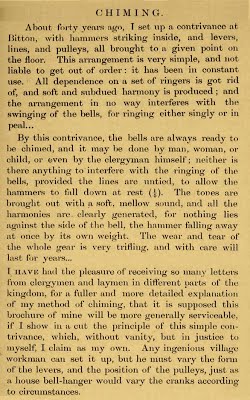
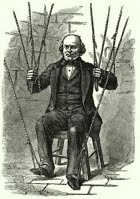

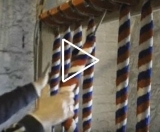
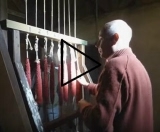
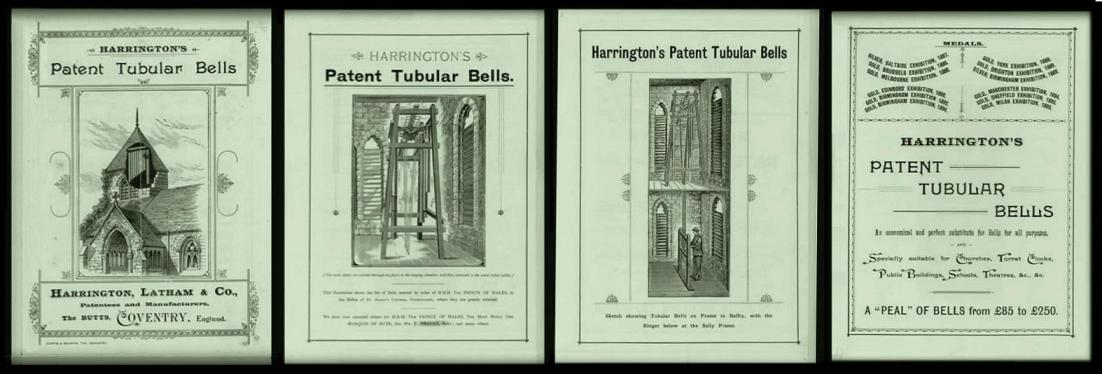
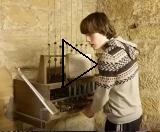

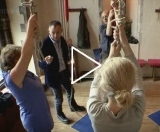
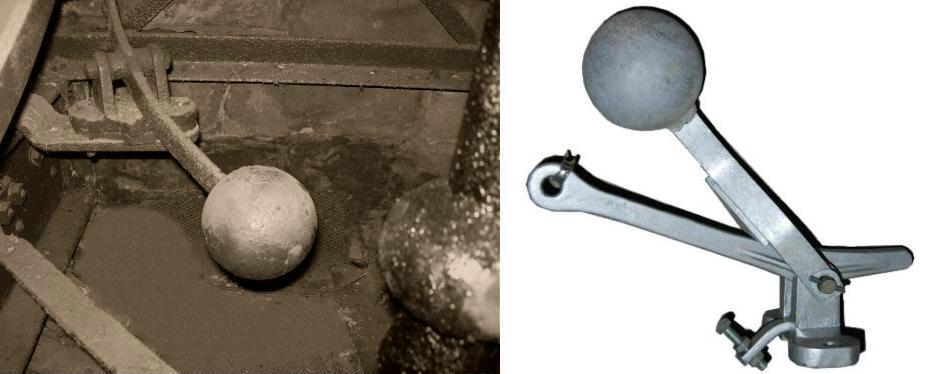
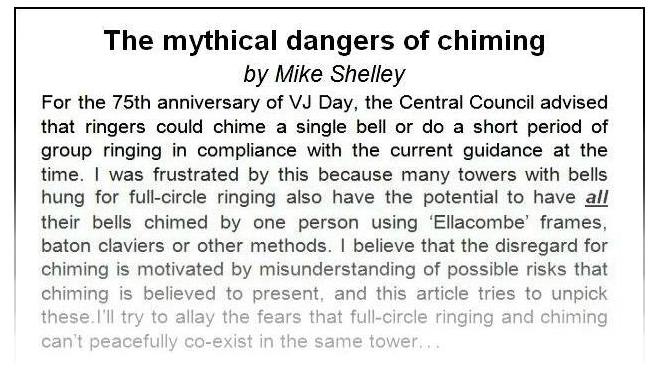
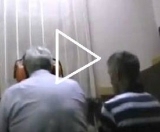
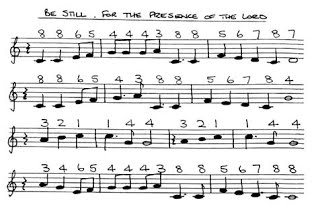
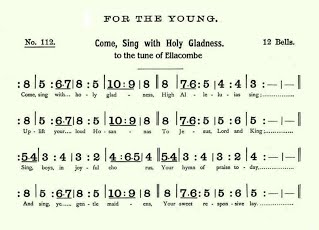
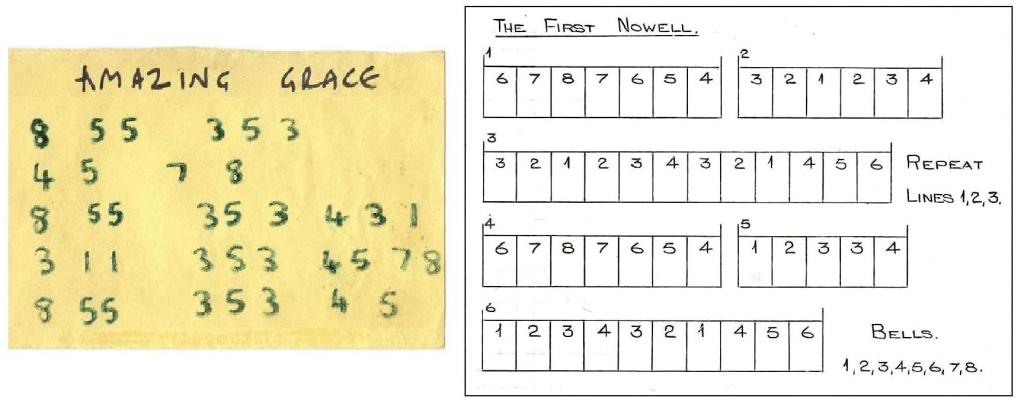

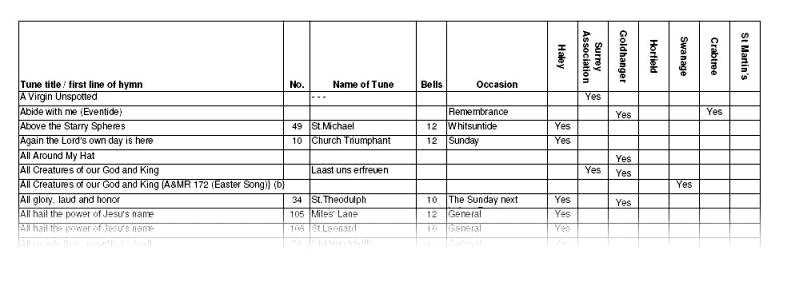
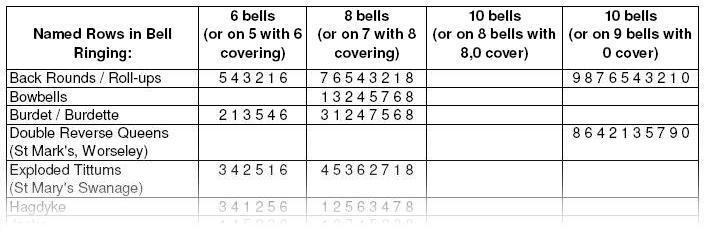


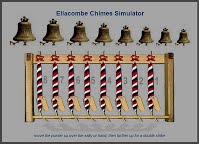

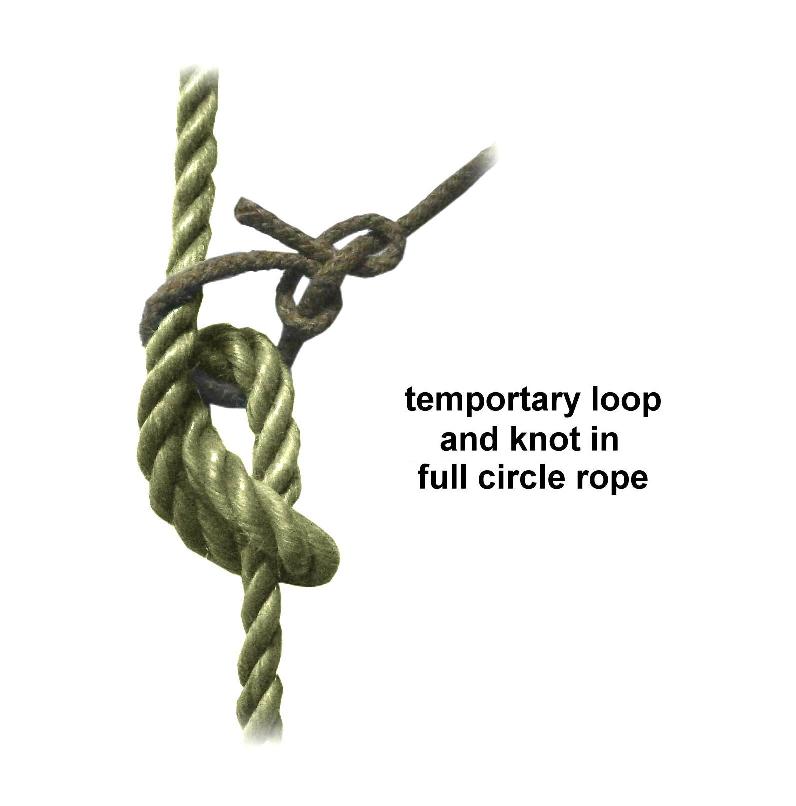
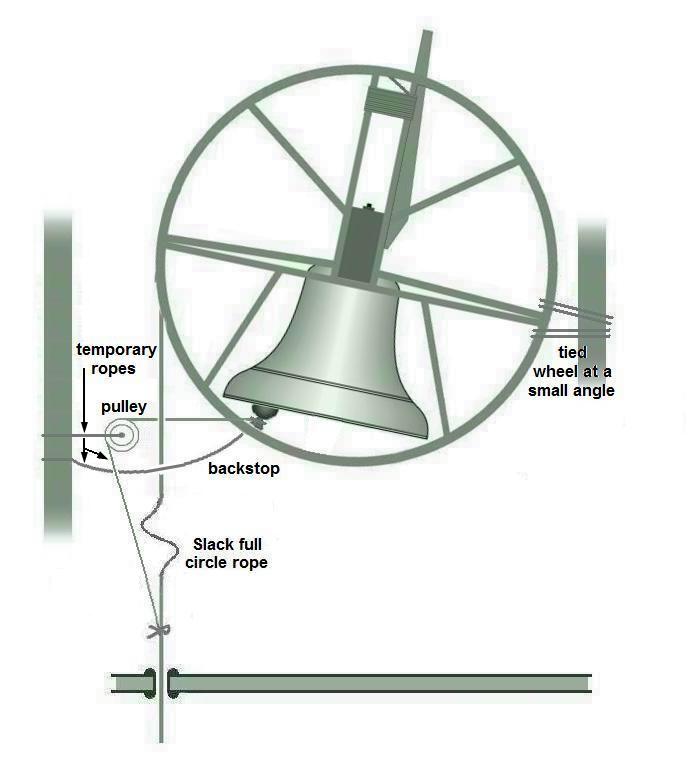

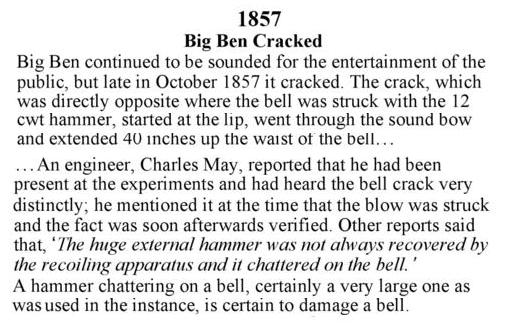
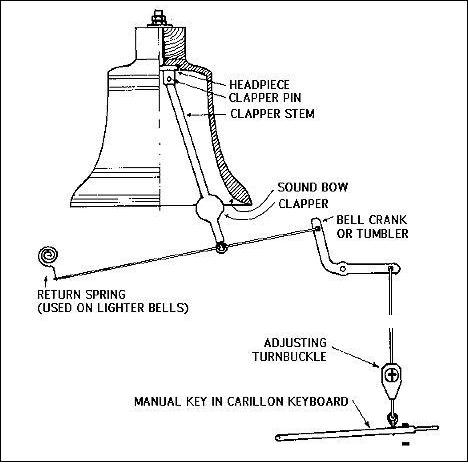
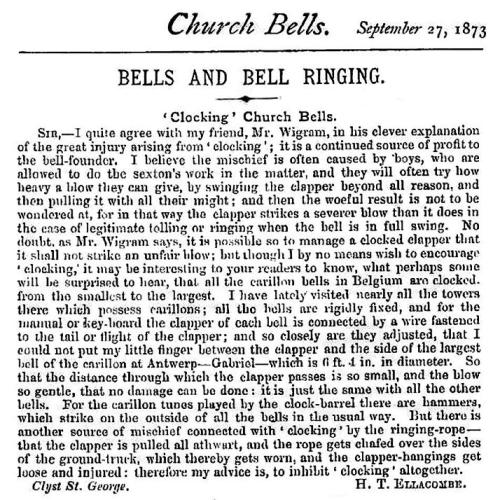
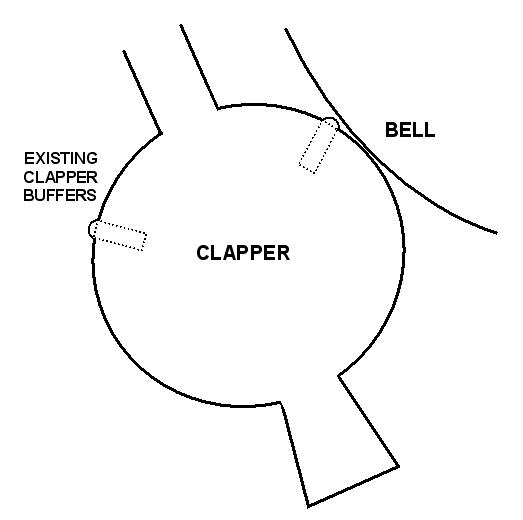
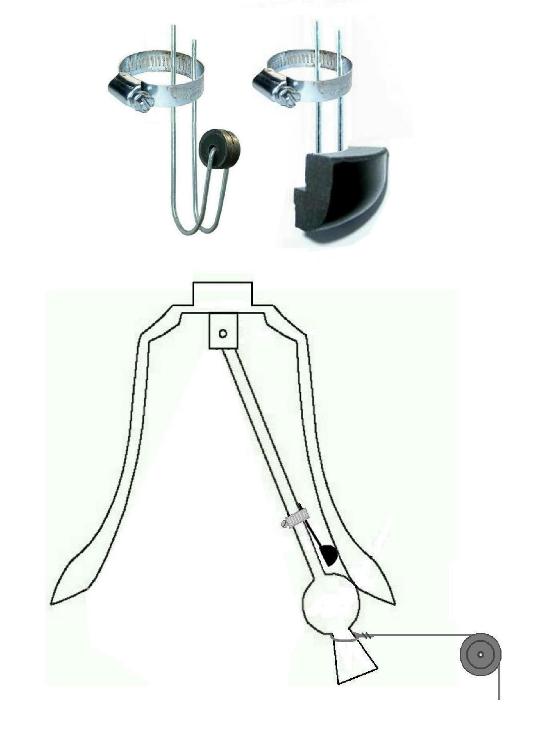

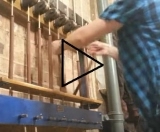
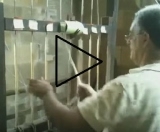
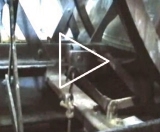
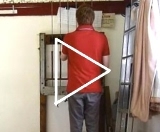
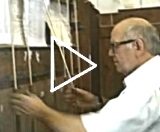
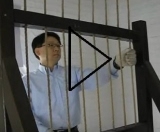
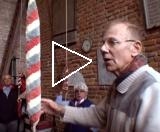
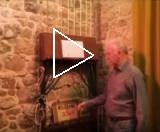
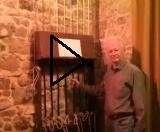
.jpg)
